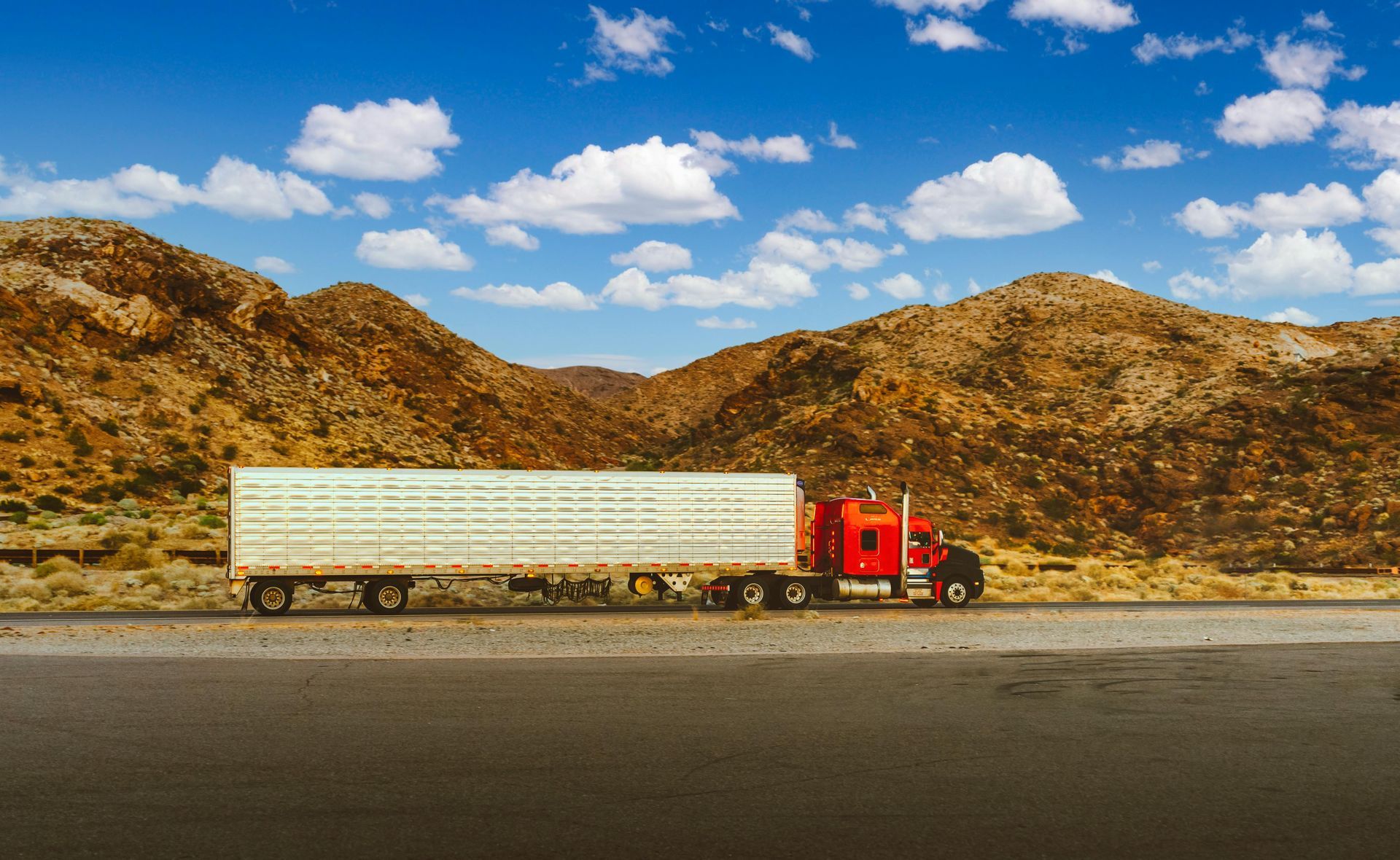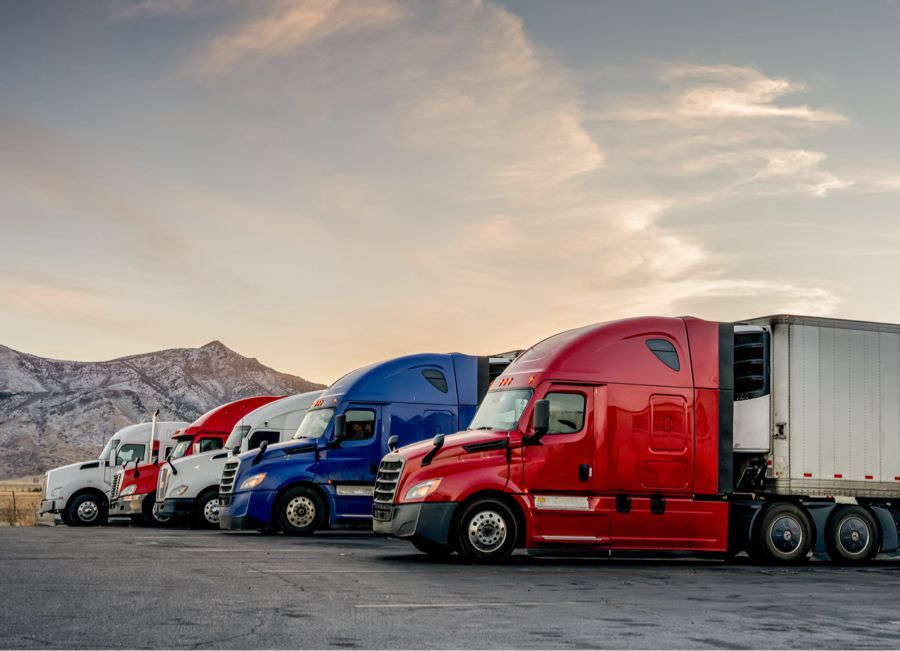How to Run Google Ads for Trucking Insurance Leads (And When It Makes More Sense to Use a Done-For-You Lead Service)
Google Ads can generate high-intent trucking insurance leads fast — if you understand how search intent works and how to target the type of trucking businesses that bind policies, not waste time price-shopping. The problem is most agencies run Google Ads wrong — broad targeting, generic keywords, no filtering, no follow-up system. The winning play is combining paid Google Ads + organic traffic + an AI lead intake system that gathers documents (loss runs, COI, IFTA reports) and warms up the lead before you ever speak to them. That means agents focus on quoting and binding, not chasing information.
How to Run Google Ads for Trucking Insurance Leads (And When It Makes More Sense to Use a Done-For-You Lead Service)

If you’ve ever tried running Google Ads for trucking insurance, you know exactly what happens:
- Clicks get expensive
- Leads drop off
- Agents chase paperwork
- You burn money fast
Everyone tells you to “run Google Ads,” but nobody tells you how to turn clicks into conversations and conversations into bound policies.
Google Ads are powerful.
But only if you build them around urgency and intent.
The trucking industry is full of buying triggers:
- DOT authority activation
- Insurance non-renewal notices
- Dispatch refusing to send a COI without coverage
- New truck added to the fleet
Truckers don’t go to Google to browse.
They search because they need something done.
Your ad must speak to action and urgency, not information.
Why Google Ads Work for Trucking Insurance (When Done Right)
People on Google aren’t scrolling for entertainment.
They're searching because they have a problem and they want a solution now.
Example search:
“commercial truck insurance quote now”
That searcher isn’t kicking tires.
He wants insurance to get on the road.
Compare that to TikTok or Meta:
- TikTok = attention
- Meta = curiosity
- Google = intent
Intent converts.
The Mistake That Kills Most Google Ad Campaigns
Most insurance agencies target broad keywords like:
- “commercial insurance”
- “truck insurance”
- “business insurance quote”
Those attract:
- Shoppers
- Browsers
- Price hunters
Instead, target high-intent keyword phrases, such as:
- “DOT authority insurance”
- “commercial trucking insurance quote”
- “semi truck insurance quote today”
- “need COI for load”
- “same day commercial truck insurance”
These searchers want action, not education.
The Google Ad Funnel That Actually Works
Step 1: Target intent-based keywords
Examples:
- “Get COI fast”
- “truck insurance same day”
- “activate authority insurance”
- “commercial truck insurance with filings”
You’re not targeting the industry.
You’re targeting the moment they need insurance.
Step 2: Use direct-response wording in your ad
Your ad should not say:
“We offer commercial auto & trucking insurance.”
That sounds like a billboard.
Your ad should say:
“Need insurance to activate authority? Fast COIs. Fast filings. Same day.”
Truckers click solutions, not slogans.
Step 3: Use a short warm lead form
Do not send users to a website homepage.
Instead, send them to:
- A short form
- A quote scheduling page
- A fast lead capture form
The fewer clicks, the better.
Step 4: Follow up immediately
Google leads are warm.
But if the agent responds slowly?
They go cold.
Speed matters.
The Real Reason Agencies Lose Money Running Google Ads
Here’s the truth:
Google ads don’t close deals.
Follow-up closes deals.
Most agencies fail because of:
- Slow response time
- Agents chasing paperwork
- Agents wasting time on admin
And that kills production.
Agencies shouldn’t be gathering documents.
Agents should be submitting quotes and binding deals.
Where Our Approach Is Different
We don’t just generate trucking insurance leads.
We warm the leads and collect documents before you get them.
Our AI Lead Assistant does all the follow-up:
- Calls the lead
- Texts the lead
- Emails the lead
- Collects loss runs, COI, VINs, driver lists, IFTA reports
Then sends you a clean submission package.
You receive:
- Warm lead
- Completed intake
- Underwriting docs ready
Your job becomes:
Quote. Submit. Bind.
Instead of:
- Chasing leads
- Chasing paperwork
- Chasing responses
Most agencies never scale because their agents are busy doing admin tasks instead of selling.
We eliminate that.
The Best Traffic Combination: Google Ads + AI Follow-Up
Google Ads bring the intent.
AI brings the speed and consistency.
Your agent only works leads who are ready:
- Warm
- Documented
- Interested
Our pipeline looks like this:
Google traffic → AI follow-up → AI gathers documents → Warm lead gets handed to agent
Your pipeline:
Agent opens CRM → sees warm lead with docs → quotes faster
No wasted time.
Who Should Run Their Own Google Ads?
Run ads yourself if:
- You have a sales system
- You have fast follow-up
- You have a team to manage testing and optimization
- You have volume needs
Don’t run them yourself if:
- You don’t follow up in under 5 minutes
- Your agents are already drowning in workload
- You need predictable ROI, not testing
You can spend months learning and optimizing…
Or you can let a system built for trucking do it for you.
FAQ: Trucking Insurance Leads (Google ads)
Do Google Ads work for trucking insurance leads?
Yes — when keyword targeting is based on intent (authority activation, COI needs, renewals).
Why do agencies waste money on Google Ads?
Slow follow-up and no process for collecting underwriting documents.
Do you provide leads?
Yes — warm, semi-exclusive, and exclusive trucking leads.
Do you gather the documents?
Yes — our AI lead assistant collects everything underwriting needs.
What’s Next (Next Steps)
You can:
- Learn Google Ads
- Test ad creatives
- Build landing pages
- Follow up manually
- Collect documents manually
or…
You can let us do the heavy lifting.
We deliver:
- Warm trucking insurance leads
- Document collection via AI
- Shared, semi-exclusive, or exclusive options
Your agents only do what makes money:
Quote. Submit. Bind.
➡️ Contact a rep and ask about warm trucking leads + Google traffic access.
Share Content.









